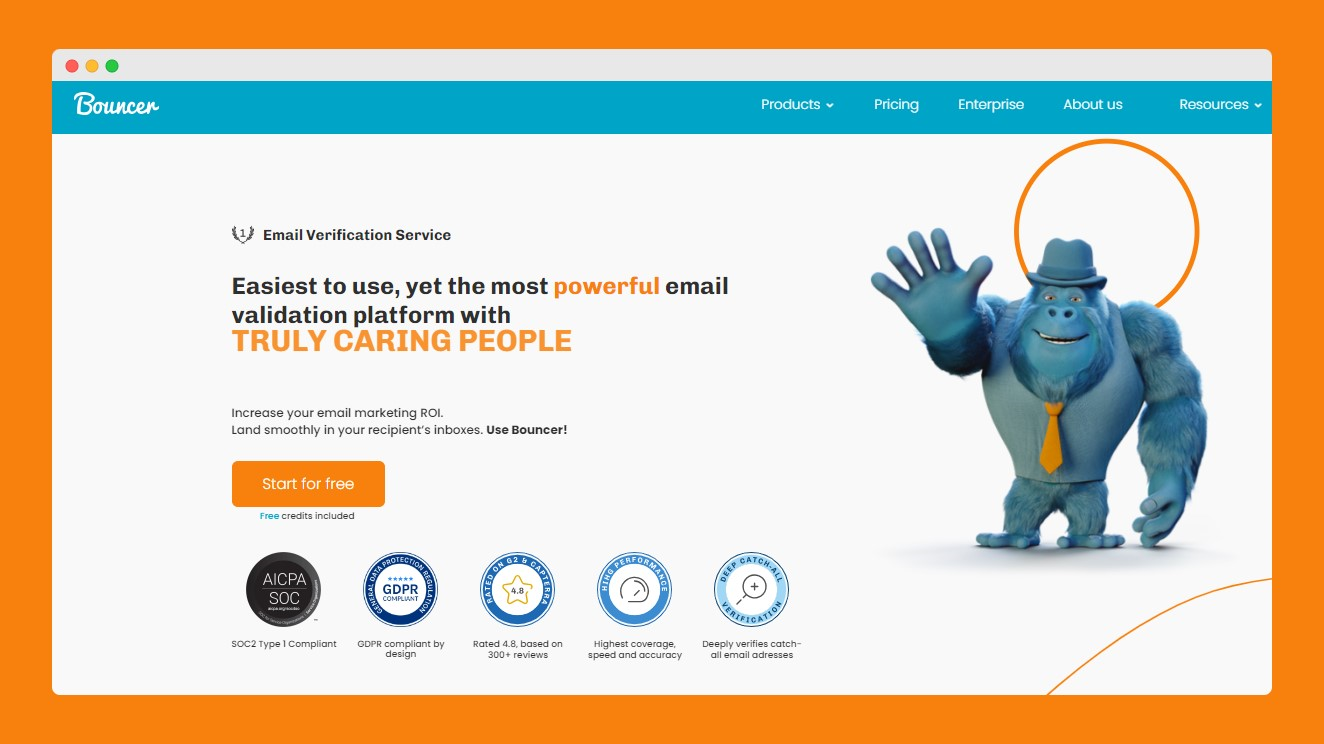There’s always the battle against inbox clutter. Spammy emails sneak in among important messages.
But there’s a hero in this story – the antispam honeypot.
Not just a tool itself but a silent partner in your quest for a clean inbox.
Intrigued?
Let us explain why marketers should care about them and how they actually work.
What is the anti-spam honeypot?
There are 89 billion spam emails sent per day! To tackle this, a clever solution is the antispam honeypot.
It’s setting up a honeypot trap. Imagine a decoy that attracts spam just like flies to honey.
The honeypot technique catches spam by being a tempting target. Once spam lands in this trap, the honeypot method helps to identify and block similar unwanted messages in the future.
Antispam honeypot can be tricky for marketing emails.
Marketers send lots of emails, and they might accidentally trigger a honeypot trap. Their emails could get wrongly tagged as spam.
As a result, their emails might not reach people, and their marketing might not work as well as they would like to.

But there are some ways to avoid it – we will talk about it later on.
Now, let’s take a look at the different types of honeypots.
Types of antispam honeypots
There are more, but we’ve provided the most common ones:
01 Email traps
They are kind of secret alarms for catching spam.
The traps are email addresses hidden in places where regular people don’t find them. Only automated spam tools grab these addresses and send spam to them.
Spam filters watch these traps, and when an email hits the trap, the filters learn and start blocking emails like that.
If a marketer’s email ends up in a trap, it might get tagged as spam. Unfortunately, even emails to real users might get blocked by spam filters.
02 Spider honeypot
Another clever type of antispam honeypots. They target spam bots, the automated programs that crawl the web looking for email addresses to spam.
Spider honeypots work by setting up fake, hidden web pages that only these spam bots would find and scrape for email addresses.
Fake pages are loaded with email addresses that are actually traps. When a spam bot captures addresses and sends spam to them, it falls right into the honeypot.
The purpose of this is to block spam. Just like with email traps, spam filters learn from this. They start recognizing and blocking emails sent to the trap addresses.
03 Malware honeypot
They are set up to look like vulnerable systems, tempting targets for spammers who use malware to spread spam. The idea is to trick spammers into attacking decoy systems.
When spammers take the bait, the honeypot captures information about the attack, for example, how the malware operates and where it comes from.
04 Decoy database
It’s an extra layer of defense in preventing spam.
Databases are filled with fake data and are intentionally made to look vulnerable and attractive to spammers and hackers.
As a spammer stumbles upon a decoy database, they think they’ve hit the jackpot. But in reality, they’ve just triggered an alarm. As soon as the spammer interacts with the decoy, the system is alerted. The interaction provides valuable insights into the spammer’s methods and intentions.
Decoy databases are often linked to a web page or a network system. They are carefully monitored to track unauthorized access or suspicious activities.
With a decoy database, system administrators can understand and prepare for potential threats better.

How does an anti-spam honeypot work?
There are a few types of honeypots, and each of them works a bit differently. But the basic premise is the same – they filter out spam from genuine messages.
It is based on using form submissions on web pages, where an extra field, known as the honeypot field, is added, for instance. The field is invisible to regular users visiting the site, but it’s visible to spam bots scouring the site.
✅ Here’s the trick: the honeypot field is hidden on the webpage using CSS, so they’re invisible to human users. However, spam bots, which often scan the site’s code, will detect this field and fill it out.
When the form is submitted, if the invisible field contains any data, it’s a clear sign that a bot, not a human, filled the form. And then the system can easily catch and block spam submissions.
A typical setup would be a form with regular fields for users to fill, like ‘First Name’ or ‘Last Name,’ and the hidden honeypot field. When the form is submitted, a simple check in the backend verifies if the honeypot field is filled. If it is, the form is flagged as spam because regular users shouldn’t be able to see or interact with that hidden field.
Honeypot vs ReCaptcha
Honeypot spam protection and ReCaptcha are popular for managing form submission spam, for example, on WordPress sites.
Here are the main differences between the two. ⬇️
🟠 Honeypot spam protection is more behind-the-scenes. It adds a hidden field to your form submission process. This field is invisible to human users filling out forms but visible to spam bots. The idea is simple – if the hidden field gets filled out, the system knows it’s likely a spam bot, not a human.
Because it’s hidden, it doesn’t bother your users. It’s great for Fluent forms and Formidable forms – it’s simple and doesn’t add extra steps for your users.
🔵 ReCaptcha is more visible. It asks users to identify images or type in letters and numbers. It’s designed to tell humans and bots apart by giving tasks that are hard for bots but easy for humans.
It can be more secure because it actively challenges users, but it can also be more intrusive. Some users find it annoying or challenging, more so if they have visual impairments or are in a hurry.

A ReCaptcha example, source: Lambdalabs.com
🐚 In a nutshell: honeypot spam protection is invisible and user-friendly but might not catch as many advanced bots. ReCaptcha is more secure but can disrupt the user experience.
Why care about an anti spam honeypot in email marketing?
If you’re an email marketer sending out content to your email lists, you may be wondering – should I care about honeypots at all? As you’re the one sending out those emails, you should carefully consider the implications of hitting a honeypot.
Spam protection helps your emails get to real people
Spam protection is important in email marketing because it helps make sure your emails actually reach human users. When your recipients use good spam protection, it keeps your emails from being mistaken for spam.
Better spam protection keeps you out of legal trouble
✔️ Laws are strict about sending unwanted emails, and honeypots help you stick them. Also, you don’t have to worry that you email people who are not interested.
✔️ Sending emails to the wrong addresses can lead to big fines. Honeypots help you avoid this by keeping your email list clean. (Read our article about the Can-Spam Act)
✔️ People trust you more when you respect their inbox.
✔️ When your emails reach the right people, they may want to take action: visit your website, submit the answer to the poll, download the ebook, and more. Email marketing is more effective, then.
Good spam filtering makes sure more emails are delivered
A good spam filtering system can ensure your messages land where they should. It catches and weeds out bad input from your forms so that your emails reach genuine customers.
It’s a direct and efficient solution, boosting the chances of your emails being opened and read by the people who matter to your business.
Stopping a spam bot protects your sender reputation
When you add honeypots to your online forms, you catch spam bots before they mess with your data. It keeps your email list clean and your sender reputation solid.
Why does this matter? If your emails get marked as spam, it’s bad news for your reputation. Internet service providers might start blocking your emails, and that’s a headache you don’t want. On top of that, honeypots help cut down on false positives — valid emails are wrongly labeled as bad.
Keeping those to a minimum = more of your emails get where they’re going, right to your real customers and readers.
📚 Read what spam trigger words to avoid in 2024.
How to avoid honeypots?
Here are the steps you can take to avoid the honeypots. Maybe there are some that you don’t know yet.
#1 Validate your email lists
Email validation with Bouncer shields your marketing efforts from spambots and honeypots. Think of it as a quick check at the door, ensuring every guest (or email on your list) is supposed to be there.
➡️ You can also use email verification API.
Taking this step cuts the risk of your emails falling into the wrong hands, like those set by systems including Google reCAPTCHA.
A clean email list does more than just look good – your messages meet real eyes, protecting your sender reputation and keeping your communication clear and on target.

So, validate your emails, avoid the traps, and stay focused on reaching genuine people.
#2 Don’t scrape websites for emails
This is definitely a bad idea. When doing this, you grab bulk email addresses without verifying if the owners want to be contacted. You may send emails to uninterested recipients or, worse, spam traps.
Always aim to display transparency in how you collect emails. Offer clear opt-in methods on your website so that each individual has agreed to receive communications from you. You reduce the chances of your emails being marked as spam and solve deliverability issues.
📚 Learn how to check email addresses for spam.
#3 Don’t purchase email lists
Buying email lists can backfire badly.
Bought lists often have people who didn’t choose to hear from you. Sending them emails can lead to complaints. It’s risky and may even get you into legal trouble.
Build your list with people who show genuine interest in what you have to say – it is slower but much safer and more effective. Your emails will be welcome, and you’ll keep your brand’s image positive.
#4 Clean your email list regularly
Over time, some emails become inactive, or people lose interest. That’s why you should regularly clean your list and remove inactive addresses. You’ll see then better email delivery rates and maybe even higher engagement.
📚 Check out 7 common email deliverability issues for marketers.
#5 Use double opt-in
As someone signs up, they receive another email to confirm their subscription, and this is a double-opt in. It’s an extra step that makes you sure each subscriber really wants your emails. It keeps your list high-quality and engaging. People on your list are there because they chose to be, twice.
Conclusion on antispam honeypots
Honeypots work as filters and are guardians of clarity in our digital communication.
Manage your email list and pick strategies like the double-opt-in, not just fight spam – that’s the way for your messages to hit home.
Also, verify your emails with Bouncer. It will keep your list clean, shiny, and healthy. Sign up today.



